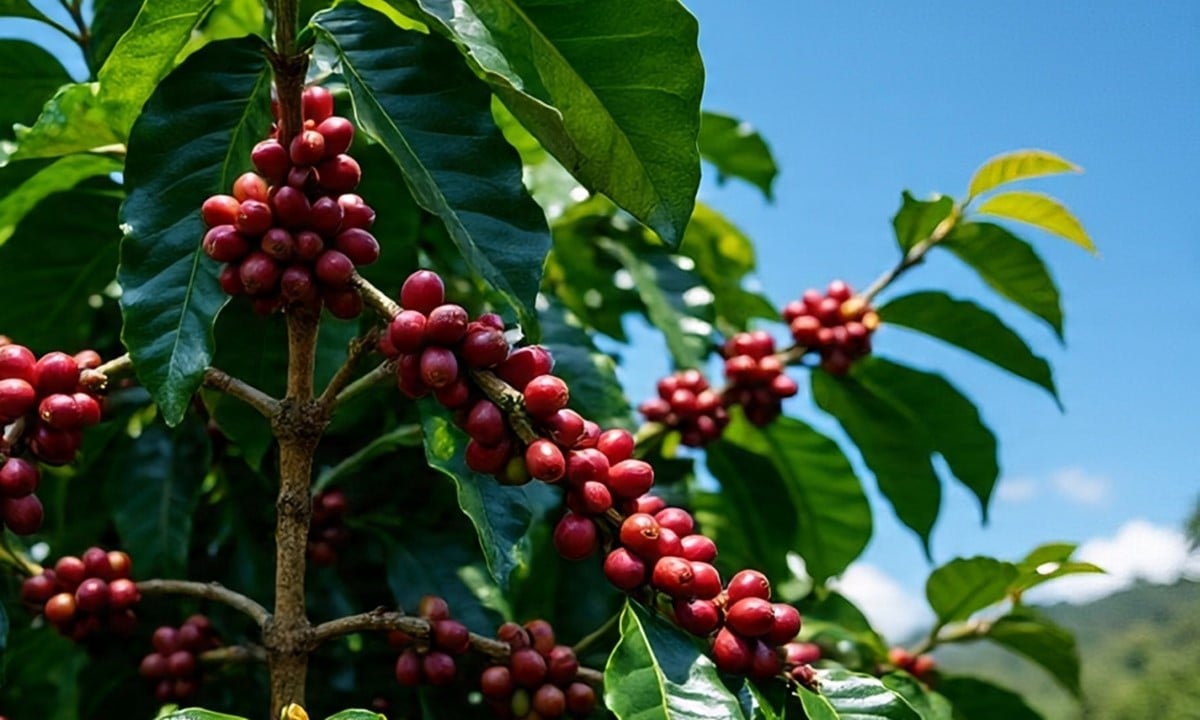October 30, 2025 | 07:06 GMT +7
October 30, 2025 | 07:06 GMT +7
Hotline: 0913.378.918
October 30, 2025 | 07:06 GMT +7
Hotline: 0913.378.918
According to statistics from the Vietnam Customs Department, Vietnam's coffee exports in June 2025 reached 118 thousand tons, with a value of nearly USD 678 million, down 20.7% in volume and 21.2% in value compared to May 2025.
In total, coffee exports amounted to over 947 thousand tons, worth USD 5.4 billion, for the first six months of 2025, representing an increase of 4.5% in volume and a sharp rise of 66.2% in value compared to the same period in 2024.
In terms of price, in June 2025, the average export price of Vietnamese coffee stood at USD 5,746/ ton, down 0.6% from May 2025 but up 26.4% compared to June 2024. Overall, in the first half of 2025, the average export price reached USD 5,705/ ton, marking an increase of 59.0% compared to the same period in 2024.

Vietnam's coffee exports reached USD 5.4 billion in the first half of 2025, up 66.2% in value compared to the same period last year. Photo: NMMT.
Vietnam’s coffee exports performed strongly in the first half of 2025, driven by soaring global coffee prices amid tightened supply. Demand recovered in major markets such as the EU, the United States, Japan, South Korea, and China. At the same time, domestic enterprises have increased investment in processing technology and traceability systems to enhance product value. In addition, effective utilization of free trade agreements (FTAs) such as the EVFTA, UKVFTA, and CPTPP has helped businesses expand their export markets.
Among Vietnam’s top 10 coffee export markets in the first six months of 2025, Germany remained the largest importer, purchasing over 149,500 tons, up 32.3%, with a value of nearly USD 825 million, a sharp increase of 113.1% compared to the same period last year.
Notably, Algeria recorded the most impressive growth during this period. Exports to this North African country reached nearly 56,800 tons, up 123%, with export turnover hitting USD 294 million, up 253.5%. This is a positive signal, opening up new opportunities for Vietnamese coffee in a stable-demand Islamic market.
Spain also recorded a significant surge, with export volume rising by 5.7%, while export value soared by 67%. Notably, in June 2025 alone, coffee exports to Spain increased by over 176%, indicating a strong recovery in demand, likely linked to the tourism season and rising domestic consumption.
The United States, Japan, and the Netherlands - Vietnam’s traditional markets - continued to show steady growth. The U.S. imported over 60,500 tons of coffee, worth USD 333.7 million, representing year-on-year increases of 10.9% in volume and 76.4% in value. Although Japan saw a slight decline in volume (down 5.7%), the export value still rose by nearly 57%. In Europe, the Netherlands and Belgium posted positive growth, with Belgium in particular recording a remarkable 109.7% increase in export value.
On the other hand, some markets saw a decline in import volume, including Italy (down 11.6%) and Russia (down 6.4%). However, export value to these markets still increased thanks to high global coffee prices. This indicates that market demand remains stable, even though volumes may have been adjusted due to domestic fluctuations or rising logistics costs.
Looking ahead, Vietnam’s coffee exports in the second half of 2025 are expected to remain positive, supported by recovering global consumption and increased domestic supply.
However, the potential imposition of a 20% import tariff by the United States on Vietnamese coffee could undermine the competitiveness of Vietnamese products compared to those of other major suppliers, such as Brazil and Colombia.
To sustain and enhance export value, Vietnam’s coffee sector must intensify deep processing, build strong branding, diversify export markets, and, importantly, standardize key criteria such as quality, traceability, and sustainability certifications - requirements are becoming increasingly common in high-end markets.
Translated by Phuong Linh

(VAN) Building on its leading position, Ho Chi Minh City drives a green, digital, and creative wood industry toward global reach and its goal of joining the world’s top 100 most livable cities by 2045.
/2025/10/25/0325-1-nongnghiep-130321.jpg)
(VAN) The 2024–2025 crop year of Viet Nam's coffee industry has ended with record export turnover of USD 8.4 billion. Since the beginning of this year, exports have already surpassed USD 7 billion.

(VAN) Vietnam and Chile are seeing opportunities to deepen their agricultural cooperation, especially as both share a common vision of sustainable development and trade integration.

(VAN) Strong export growth across industries drives Phu Tho’s economic breakthrough and contributes to achieving overall growth goals.

(VAN) During the first 7 months of 2025, Russia boosted its share of Chinese poultry imports to a record 18%, up from 14% the previous year.

(VAN) By October, fruit and vegetable export turnover is estimated to exceed 7 billion USD. This marks the second consecutive year that the sector has surpassed this milestone.

(VAN) Mr. Hamish Marr, New Zealand’s Special Agricultural Trade Envoy, shares experience in developing sustainable, transparent, and value-added agricultural export chains.